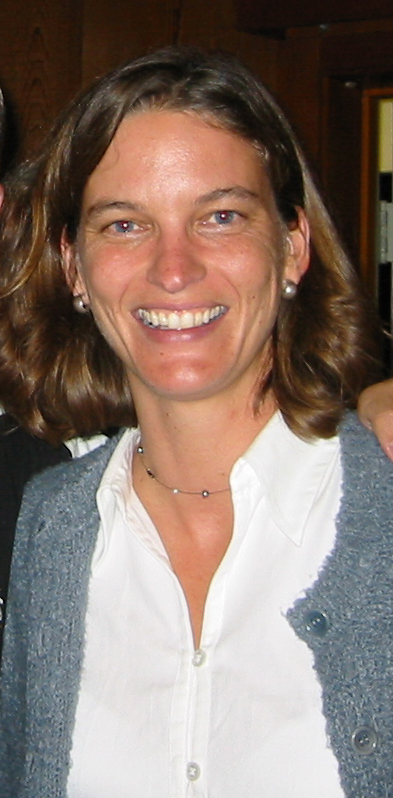|
Schedule-at-a-Glance
Comprehensive
Program
Workshop
Descriptions
Banquet
Exhibitors/Sponsors
Call
for Poster
Abstracts
APSUO
Elections
Franklin
Award
Registration
Form
General
Information
Travel
and Housing
Home |
.
|
APSUO
Rosalind Franklin Young Investigator Award
About
the Award | About
Rosalind
Franklin
| 2004 Winner
In
conjunction with the Advanced Photon Source, the
APS Users Organization has established the APSUO
Rosalind Franklin Young Investigator Award to
recognize an important technical or scientific
accomplishment by a young investigator that
depended on, or is beneficial to, the APS. The
award is open to senior graduate students and those
whose Ph.D. was awarded no more than two years
prior to nomination.The
award, which consists of a plaque plus $1000, will
be presented at the annual APS Users Meeting. The
recipient of the award will be asked to present
20-minute talk on his or her research at this
meeting.
About
Rosalind Franklin
The
brilliant but short-lived chemist Rosalind Franklin
played a critical but largely unacknowledged role
in the discovery of the structure of DNA. While
working as a research associate for John Randall at
King's College in 1951, Franklin was assigned to
study the unwieldy DNA molecule with x-ray
crystallography--a technique only just beginning to
be used for biological molecules. Her results
revealed the position of the sugar-phosphate
backbone and the basic helical structure of the
molecule; when her x-ray photographs filtered
unofficially to John Watson at Cambridge, he
immediately saw their implications. Franklin went
on to work on the tobacco mosaic virus and the
polio virus, but her career came to an untimely end
when she died of cancer in 1958 at age
37.More
information on Franklin is at
http://www.accessexcellence.org/AB/BC/Rosalind_Franklin.html
http://www.sdsc.edu/ScienceWomen/franklin.html 2004 Winner
 |
The Advanced Photon Source (APS) Users Organization is pleased to announce that Dr. Alexis S. Templeton has been chosen to receive the first APS Rosalind Franklin Young Investigator Award. Dr. Templeton will receive this award, which consists of a plaque plus $1000, on Thursday, May 6 at the closing session of the 2004 APS User Meeting. At that time, Dr. Templeton will also deliver a short talk about her work .Her work as a graduate student at Stanford University and more recent studies as a Postdoctoral Research Associate at Scripps Institution of Oceanography, University of California, San Diego , centers around the influence of microorganisms in the speciation of heavy metals in environmental systems, as well as the role of bacteria in the weathering of basaltic glasses in deep ocean environments. To simultaneously investigate both the abiotic and biologically-mediated reactions at biofilm/mineral interfaces, Alexis has relied heavily on a diverse array of spectroscopic and microscopic techniques. |
For her graduate work, she used microbeam x-ray fluorescence, conventional and grazing angle x-ray absorption spectroscopy, and long-period x-ray standing wave (XSW) synchrotron-based techniques. A particularly novel development was her combination of the XSW technique with XANES spectroscopy to determine the vertical distribution and speciation of selenium within microbial biofilms formed on oxide surfaces. The combined methods she used provide a fully three-dimensional characterization of trace element distribution and speciation at a complex interface and represents a major advance in the approach to investigating such systems.
Her current work involves a multi-disciplinary investigation focused on identifying key microorganisms in ocean floor environments that survive through oxidation of Fe(II) and Mn(II) in basaltic glasses. Geochemical measurements are directed towards characterizing the chemical signatures associated with biologically-induced weathering and constraining the relative rates of biotic vs. abiotic dissolution and oxidation processes. For this work, she has developed a protocol combining x-ray reflectivity, total reflection x-ray fluorescence, grazing-angle XANES, and x-ray diffraction measurements. These methods can be used to determine the thickness and density of reacted surface layers, identify surface-associated weathering products, and measure the redistribution and redox transformation of metals in the weathered surfaces. This work is an exciting application of synchrotron methods to a complex problem and is likely to have a major impact on our understanding of fundamental biological processes in the deep ocean.
In her brief professional career, Alexis Templeton has authored or co-authored 16 peer-reviewed publications and received a number of prestigious awards. The APS and the APS Users Organization are happy to add the APS Rosalind Franklin Award to that number.
|
|

